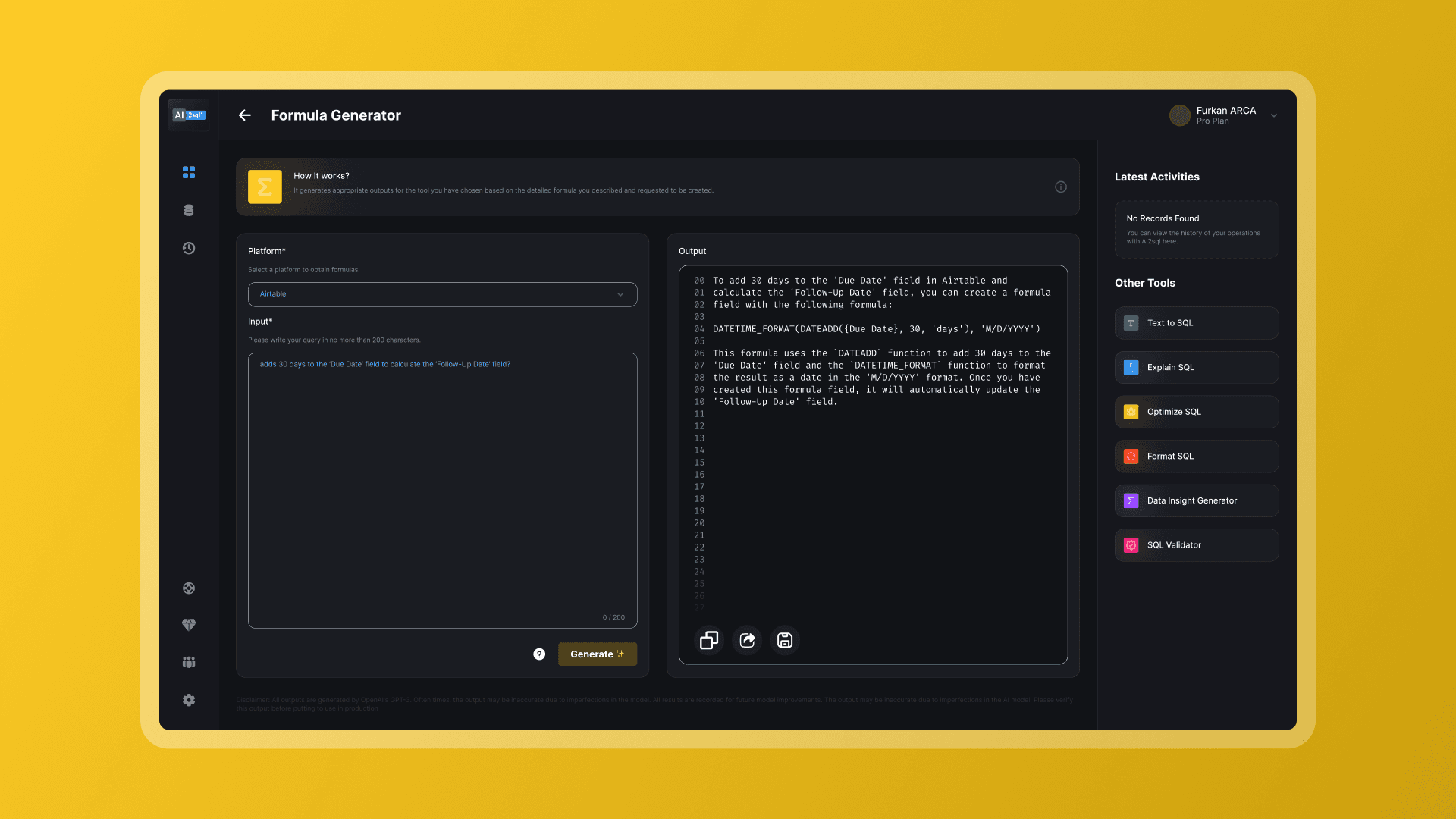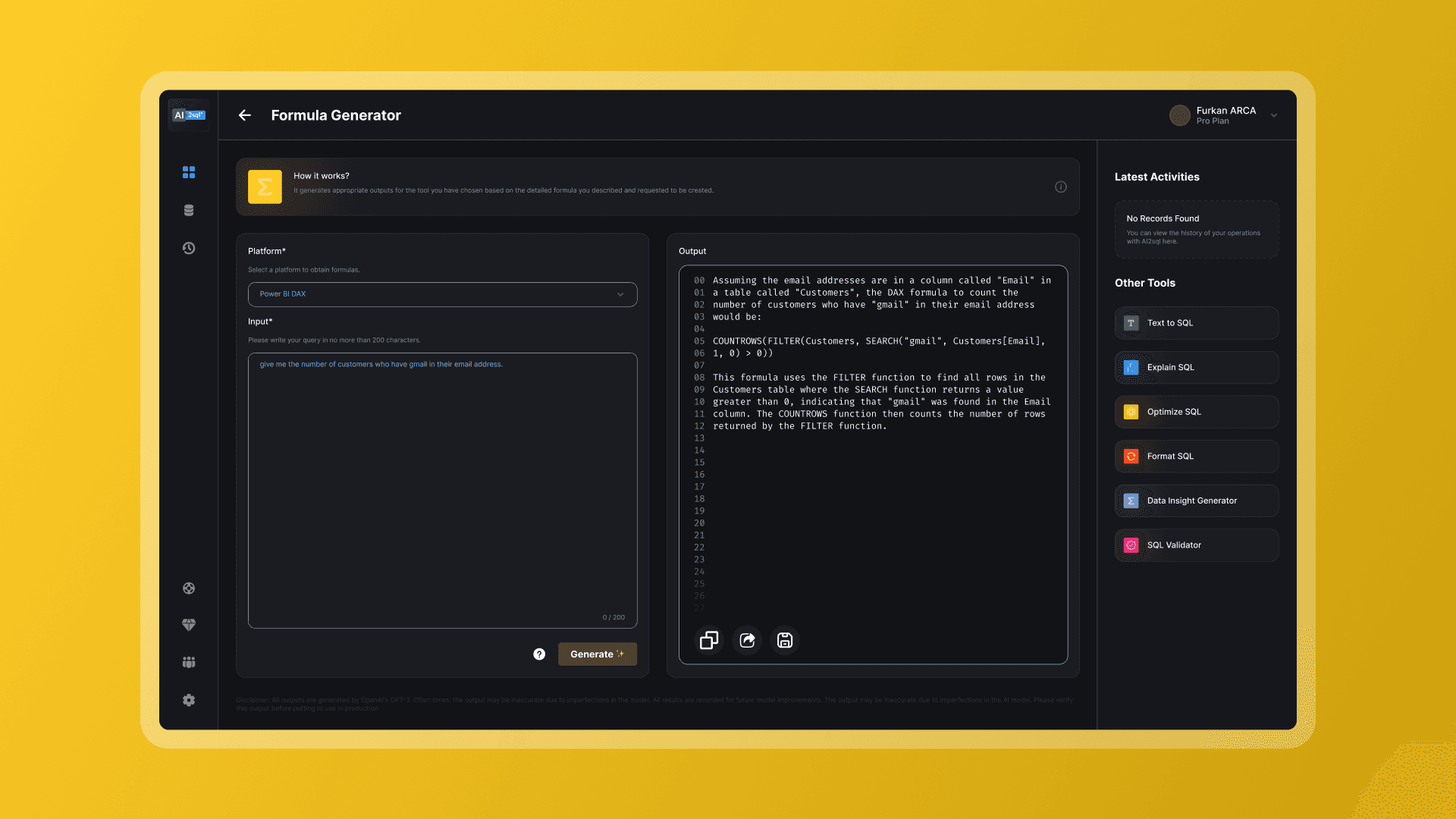TOOLS
Unlocking the Power of Airtable Formulas: A Beginner's Guide
If you're using Airtable, you're probably already aware of the many benefits it offers. From managing projects to keeping track of clients and sales, Airtable has become a go-to tool for businesses of all sizes. But did you know that Airtable also offers a powerful feature called "Formulas" that can help you to streamline your workflows, automate processes, and make more informed decisions based on your data? In this beginner's guide, we'll cover everything you need to know to get started with Airtable Formulas, from the basics to advanced features.
Basic Formulas in Airtable
At its core, Airtable Formulas are just like any other spreadsheet formulas. You can use them to perform basic mathematical operations, such as addition, subtraction, multiplication, and division. You can also reference other fields in your formulas, so you can perform calculations based on data that's already in your Airtable base. Here's an example of a basic formula:
This formula multiplies the number of sales by the average sale price to calculate the total revenue.
Intermediate Formulas in Airtable
Once you've got the basics down, you can start to explore some of the more advanced mathematical functions that Airtable offers. This includes functions like ROUND, ABS, SQRT, and LOG. You can also use logical operators like IF, AND, OR, and NOT to create more complex formulas that can make decisions based on the data in your table. Here's an example of an intermediate formula:
This formula uses the IF function to calculate an employee's salary based on their years of experience. If they have more than five years of experience, their salary is increased by 10%.
Advanced Formulas in Airtable
Finally, once you've mastered the basics and intermediate functions, you can start to explore some of the more advanced features that Airtable has to offer. This includes aggregation functions like SUM, AVERAGE, COUNT, MIN, and MAX, which allow you to perform calculations across multiple records in your table. You can also use lookup functions like FIND, SEARCH, and SUBSTITUTE to manipulate text fields, and array functions like ARRAYJOIN, ARRAYUNIQUE, and ARRAYCOMPACT to manipulate arrays of data. Here's an example of an advanced formula:
This formula calculates the total budget for a project by adding up the expenses and multiplying the hourly rate by the total number of hours worked.
Best Practices for Working with Formulas in Airtable
As you start to create more complex formulas, it's important to follow best practices to ensure that your formulas are efficient, easy to understand, and easy to maintain. This includes testing and debugging your formulas, documenting them properly, and organizing your formulas in a way that makes sense. It's also important to avoid common mistakes like circular references, which can cause your formulas to break.
Getting Started with AI2sql Formula Bot
Getting started with AI2sql Formula Bot is easy. Simply sign up for an account, select the type of formula you need, and let the tool do the rest. You'll be amazed at how quickly and efficiently it works.
Conclusion
Airtable Formulas are a powerful feature that can help you to streamline your workflows, automate processes, and make more informed decisions based on your data. By mastering the basics, intermediate, and advanced features of Airtable Formulas, you'll be able to take your Airtable bases to the next level. So what are you waiting for? Start experimenting with Airtable Formulas today and see how they can transform your business!





